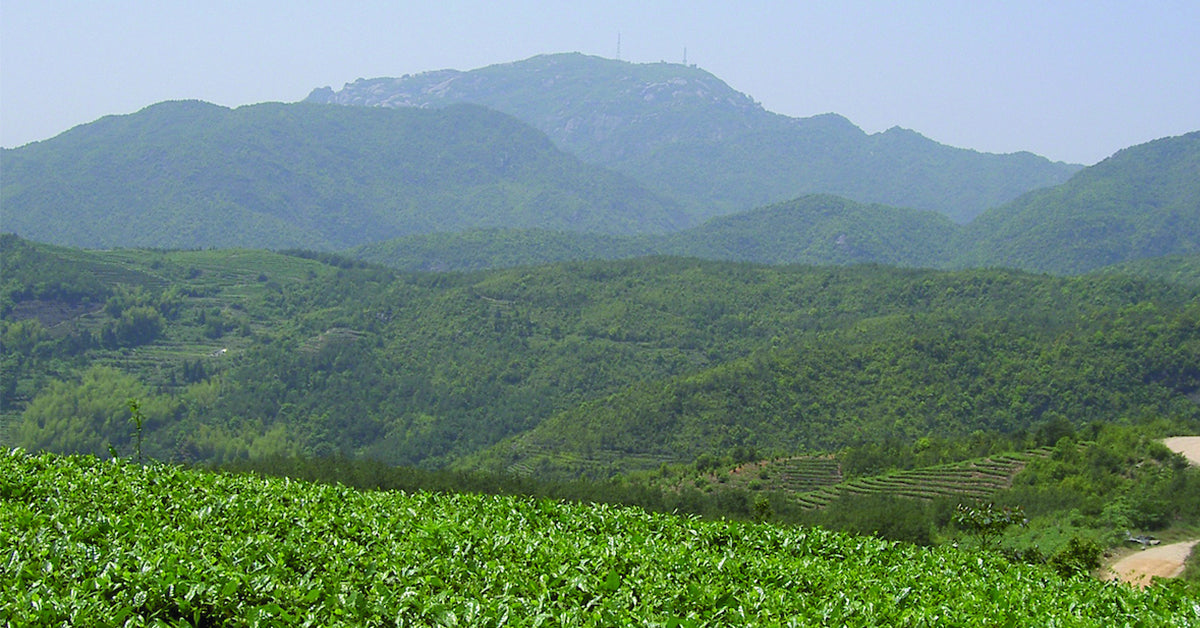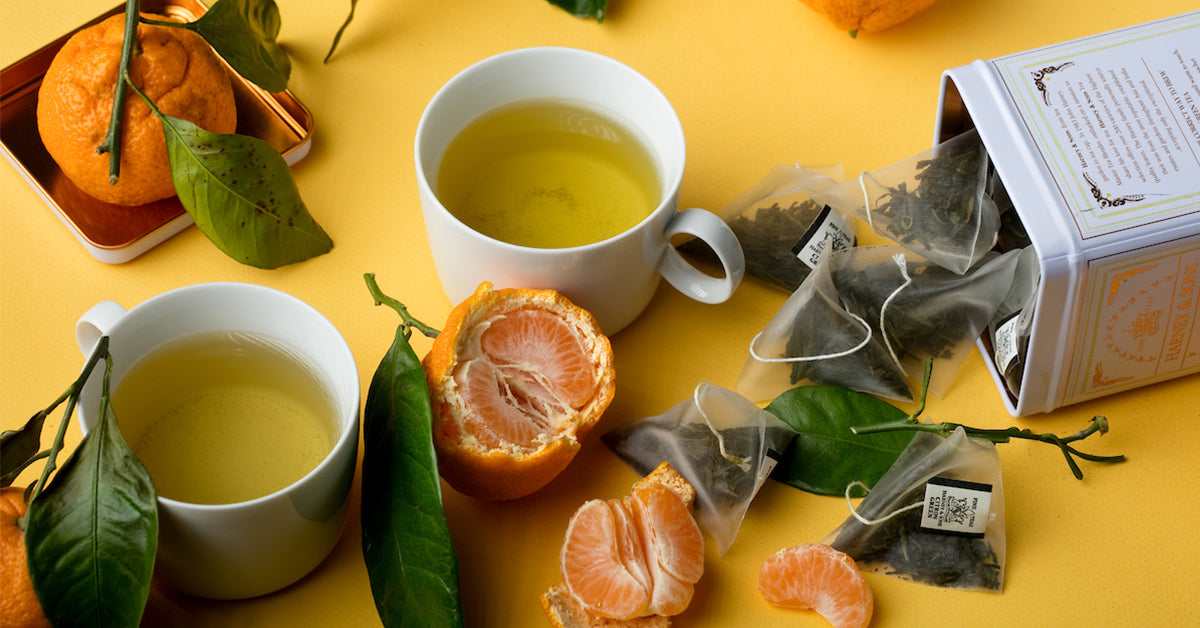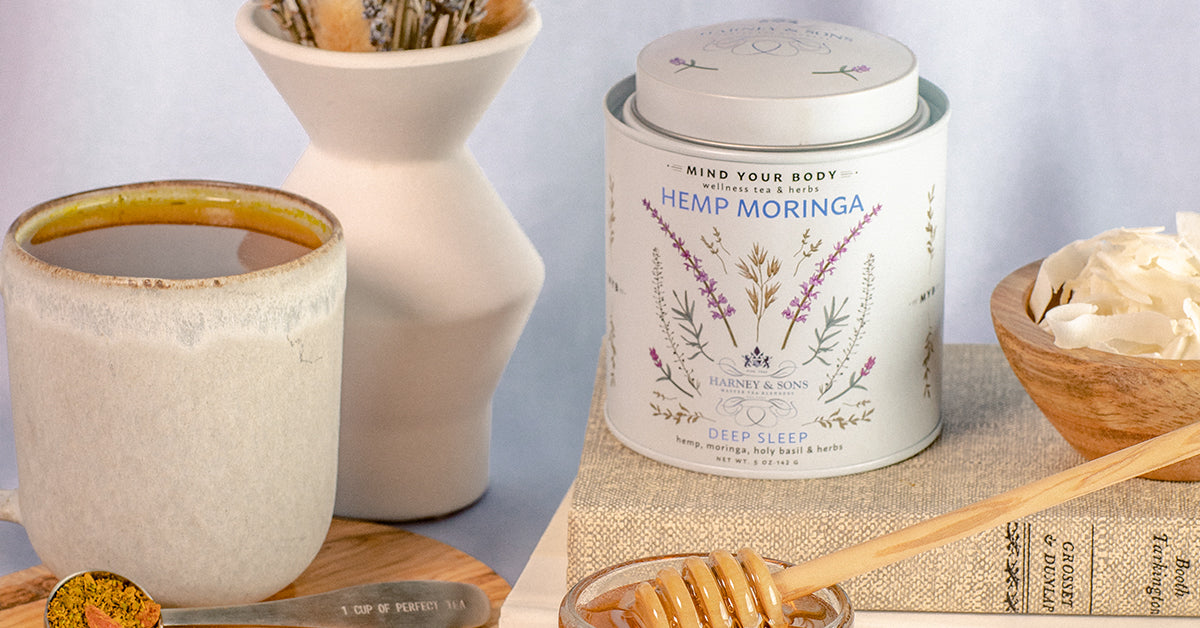Welcome to the first of four blog posts exploring four of China’s largest tea provinces: Fujian, Yunnan, Hunan, and Zhejiang. Before we dive into our selected region today, just a little background.
China, the motherland of tea, is the #1 grower of tea in the world, producing approximately two million tons per year. As such, it’s no surprise that China also has the most land devoted to tea growing, with many provinces having tea gardens. These gardens are often found in small patches high in the mountains, growing down the mountains until they are stopped by geography. It is these geographical stops and starts that cause the gardens to be smaller and located in patches rather than vast and endless. China’s tea farms are a loosely connected network of isolated gardens as determined by their natural environment.
All six classes of tea (black, white, green, yellow, oolong and post-fermented (puerh)) are grown throughout China and are derived from approximately 340 different plant varieties of Camellia sinensis. All six classes of tea are not produced in each province, however; rather, each province is known for certain types of tea and styles of production.
Fujian is where we will start. And is a great place to start, as most types of great teas are made there. This province is best known for its exotic white teas, divine jasmine teas, earthy oolongs, and flavorful blacks (with awesome names like Golden Crab, Golden Monkey and King of Golden Needles). It is only missing green and puerh teas. Fujian is a coastal province located in southeast China. With a hilly terrain, Fujian is said to be “eight parts mountain, one part water and one part farmland.” Fujian has a subtropical climate, with hot, humid summers and mild winters. Tea plants thrive in the Fujian environment, renowned for the variety of teas it produces from its rich soil. And the tea farmers have developed so many different styles of teas. They have found specific areas where specific tea plants excel, and they make them in radically different ways to make delicious teas. You can understand why we are in love with Fujian teas. In another blog series, we will go over all the details that make up these radically great-tasting teas.
Tea heritage is strongly associated with Fujian, evidenced not only by its diverse set of teas but by the fact that the English word “tea” was derived from the Minnan word for “tea.” (The Min River divides the Province, so south of the river they speak Min nan dialect and north of the river they speak Min bei - in Chinese “nan” means “south” and “bei” means “north.”) My dad, Mike, remembers on his first trip there back in 1996 when he drove north from Guangdong Province. In Guangdong they pronounce it as “cha.” An hour north in Fujian they call it “ta,” which is our source word for “tea.”

When you look at the picture you can understand why the seminal book about this region is called Harvesting Mountains.
We are big fans of the Fujian province, not only for its outstanding teas but for its beauty. We went to the coastal city of Fuding in 2019 for white and jasmine teas. Everywhere we drove, you could see tea. In the hills above the city, we walked in an organic tea garden, and off in the distance we could spy the ocean. This is one of the few spots where that happens. Also down in the city, there was tea in the streets drying in what reminded us of beach chairs. Afterwards, we drove into the black tea area to Golden Monkey towns of Fuan and Zheng He and Song Xi. On a previous trip, we had stopped in the ancient town of Panyang where Panyang Congou comes from. It was a joy to climb the hills and investigate the ancient tea factories. We finished the trip in the Wuyishan mountains in the northwest corner of the Province for Da Hong Pao oolong and smoky Lapsang Souchong. It is chillier up there, and the mountains are often shrouded in fog. This trip we did not make it down to Anxi where Ti Quan Yin oolongs come from. As we often say, so many teas, so little time!

At the end of this path are found the three Da Hong Pao tea plants-- perhaps the most famous tea plants.
Some of the favorite Fujian teas we carry include:
King of Bai Mudan. On one of Mike’s trips to Fuding, he looked at many producers of white tea and was impressed with their innovations. While there, he discovered this very special white tea and thought more than a few people would enjoy it. Bai Mudans are in a category called “new-style leaf white tea,” which is a subcategory of white tea made from the first leaf bunch of the tea plant. It has a slightly more concentrated flavor profile than true budset white tea, as you’ll discover when you drink this sweet, full-bodied tea.
Dragon Pearl Jasmine. A masterpiece of green and white teas, Dragon Pearl Jasmine is comprised of little “pearls” gently infused with jasmine flowers. These are hand rolled by ladies in Fuan in northern Fujian province. When my dad met the lady who originated this lovely tea, he thanked her on behalf of all tea drinkers! The blend is pure joy, with the floral and sweet aromas of the light colored brew.
Wuyi Da Hong Pao. Few places can boast as rich a crop of tea as China's Wuyi mountains. From those famous tea fields comes this Da Hong Pao, or “Big Red Robe.” A wonderful oolong tea produced from three famous tea plants, their large, unbroken leaves are roughly 40% oxidized for a warm and rich yet non-intimidating flavor. Hints of peach compote and dark molasses carry through on the palate, with each steep producing a slightly different evolution of flavor.
Golden Monkey. This black tea comes from the northern part of Fujian province. It is from the Panyang Congou family, one of the last of its type of the great historical teas that were produced in China during the days of the tea trade. It features large black tea leaves interspersed with golden tips. It produces a lightly sweet and 'round' cup of tea with a nice level of complexity. Look for hints of apricot, nuts and rose.
Thanks for joining us for an exploration of Fujian province and the wonderful teas that originate from there. We’ll be back next month with more info on another of China’s amazing tea provinces.
















2 comments
Laurie
Thank you for the tea-ducation, Emeric! Great fun learning more about the source of these delicious brews 🫖
Thank you for the tea-ducation, Emeric! Great fun learning more about the source of these delicious brews 🫖
Barbara
The beautiful pictures and informative information is so appreciated. LOVED this: When my dad met the lady who originated this lovely tea, he thanked her on behalf of all tea drinkers! The blend is pure joy, with the floral and sweet aromas of the light colored brew. Thank you so much for all you do. Such great products and information. Warms my 70 year old heart. Hugs to all.
The beautiful pictures and informative information is so appreciated. LOVED this: When my dad met the lady who originated this lovely tea, he thanked her on behalf of all tea drinkers! The blend is pure joy, with the floral and sweet aromas of the light colored brew. Thank you so much for all you do. Such great products and information. Warms my 70 year old heart. Hugs to all.